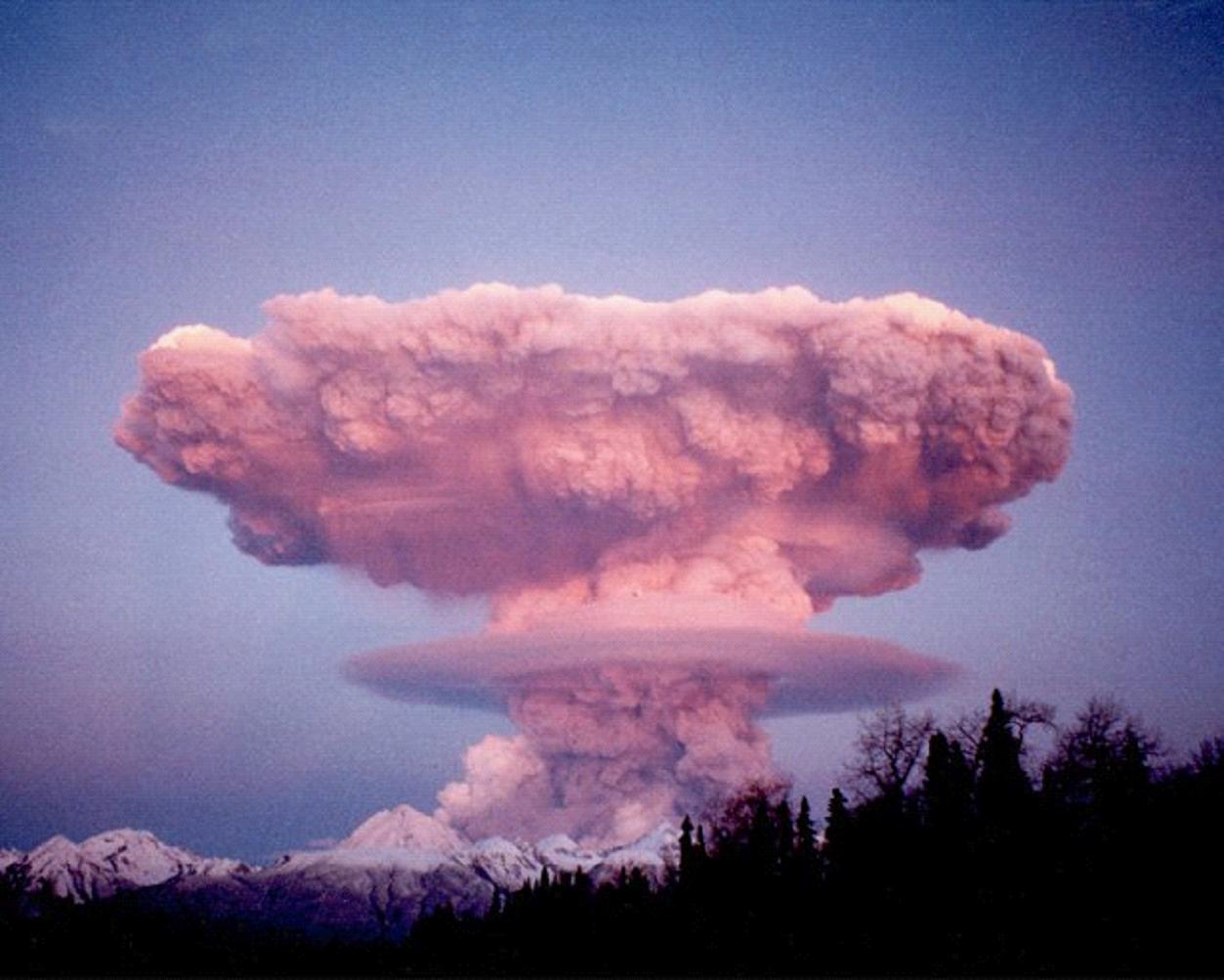|
|
Plasma Volcanoes
Oct
28, 2009
The recent eruption of Mt.
Redoubt in Alaska calls to mind the
skeptical imperative to doubt again
the accepted explanations of
vulcanology."If I hadn't
believed it, I never would have seen
it with my own two eyes."
--- Dr. James C. Kroll
What we see is influenced by what we
presume, so the skeptical scientist
will make an effort to see things
that aren’t readily explainable.
Common things to see around
volcanoes are steam and ash plumes,
pyroclastic flows, and lava rivers.
Less common things are rotation
of the plume, lightning around the
column, and waterspouts or dust
devils downwind under the plume.
Since the invention of the
seismograph, a sub-discipline of
seismic study has developed.
The consensus explanations for
volcanoes have lumbered into our
modern world from the Age of
Mechanics, when slide rules were
state-of-the-art and things worked
by bumping into each other.
Convection is king: Hot, buoyant
magma rises through cracks in rocks
from the “magic mantle,” that
mythical realm far below ground that
generates excuses for mysterious
phenomena on the ground.
When the magma ruptures the surface,
steam and ash boil into the sky.
Shear forces generate eddies, which
become vertical and coalesce to
impart rotation to the plume.
Friction between ash particles
generates static electricity, which
discharges as lightning around the
eruption column. Seismic signals are
exclusively from displacements and
mark out the extents of magma
chambers beneath volcanoes.
The Age of Plasma, when computers
are taken for granted and things
work by electrical transmission,
suggests more agile explanations.
Discoveries from space and in plasma
labs guide theories: A volcano could
be the result of underground
“lightning.”
Peratt and Dessler favorably
compared the “volcano” Prometheus on
Jupiter’s moon Io to the plume of a
plasma focus device. The contours of
the plume indicated that the center
of discharge was about two
kilometers below the surface.
Because Io has no atmosphere, the
plasma plume displays its pristine
shape. On Earth, convection may
alter the shape. Mechanical forces
do have their places, although with
the advent of plasma those places
must be tested to separate reality
from lumbering presumptions.
Rotation may be driven by the
circular forces in the Birkeland
currents of the plume.
Consensus explanations have begun
calling the copious lightning around
many eruption columns “lightning
sheaths.” Although they are not
referring to the double-layer
sheaths of plasma physics, the term
may be appropriately carried over.
The question of interest then
becomes the inverse: Why do some
ejection columns not exhibit a
lightning sheath?
The occurrence of
waterspouts and dust devils
under plumes raises an interesting
question for both consensus and
plasma models. No one thought about
electricity in respect to these
phenomena until questions about the
Martian dust devils led NASA
researchers to measure electric
fields near Arizona dust devils—and
found strong ones. Although
reflexively ascribed to
triboelectricity (from friction),
the plasma connection begs for
further investigations.
Seismic signals are also an open
question. If speaker wires from a
hi-fi are inserted into a flame (for
example, into the mantle of a
Coleman lantern), the flame will
“make music.” This is the principle
behind once-popular plasma speakers.
Because both magma and the crystals
in rocks are forms of plasma, the
explanation for seismic signals can
no longer exclude the possibility
that they are transduced between
acoustic and electromagnetic modes.
Are ideas of Earth’s “liquid core”
and “magic mantle” simply artifacts
of outdated premises? Are the
mechanical deep layers of the Earth
instead electrical double layers
that convert pressure and
displacement waves into electrical
waves and back again? Do the “quake
signals” that supposedly delineate
magma chambers actually indicate
coronal discharges around an
underground plasma focus?
Modern instruments are capable of
testing explanations with greater
rigor than is being done. The
complacency of geologists is not due
to a lack of technology but to a
lack of scientific skepticism.
Geologists’ unquestioned assumptions
may well be hiding plasma volcanoes.
Mel Acheson
|
|
|
|
|
|
SPECIAL NOTE - **New Volumes Available:
We are pleased to announce a new
e-book series
THE UNIVERSE ELECTRIC. Available now, the first volume
of this series, titled Big Bang, summarizes the failure of modern cosmology
and offers a new electrical perspective on the cosmos. At
over 200 pages, and
designed for broadest public appeal, it combines spectacular
full-color graphics with lean and readily understandable
text.
**Then second and third volumes in the series are now available,
respectively titled Sun and Comet, they offer
the reader easy to understand explanations of how and why these bodies
exist within an Electric Universe.
High school and college students--and teachers in
numerous fields--will love these books. So will a large
audience of general readers.
Visitors to the Thunderbolts.info site have often
wondered whether they could fully appreciate the Electric
Universe without further formal education. The answer is
given by these exquisitely designed books. Readers from
virtually all backgrounds and education levels will find them
easy to comprehend, from start to finish.
For the Thunderbolts Project, this series is a milestone.
Please see for yourself by checking out the new
Thunderbolts Project website, our leading edge in
reaching new markets globally.
Please visit our
Forum
|
|
|
|
|
|
|
|







